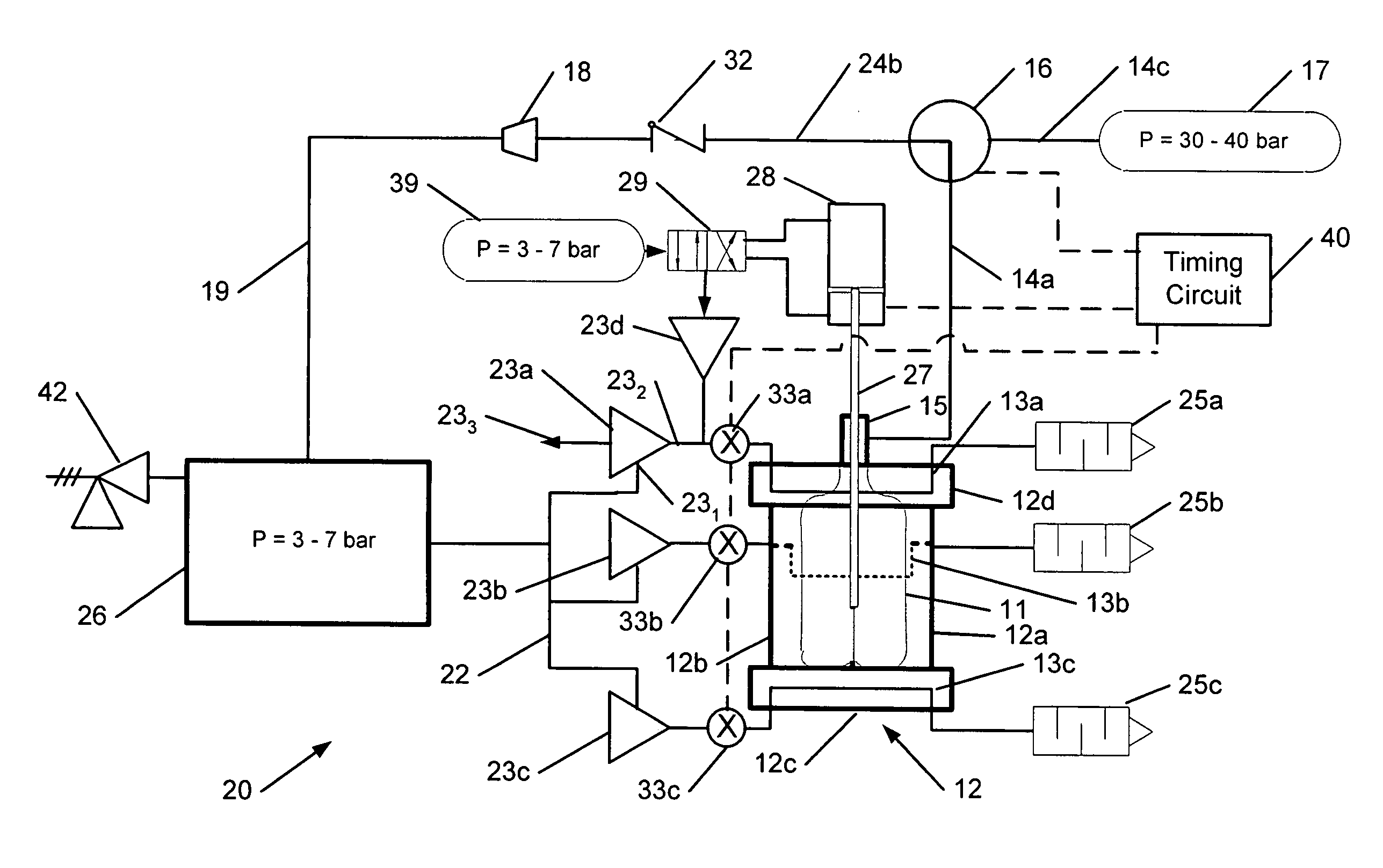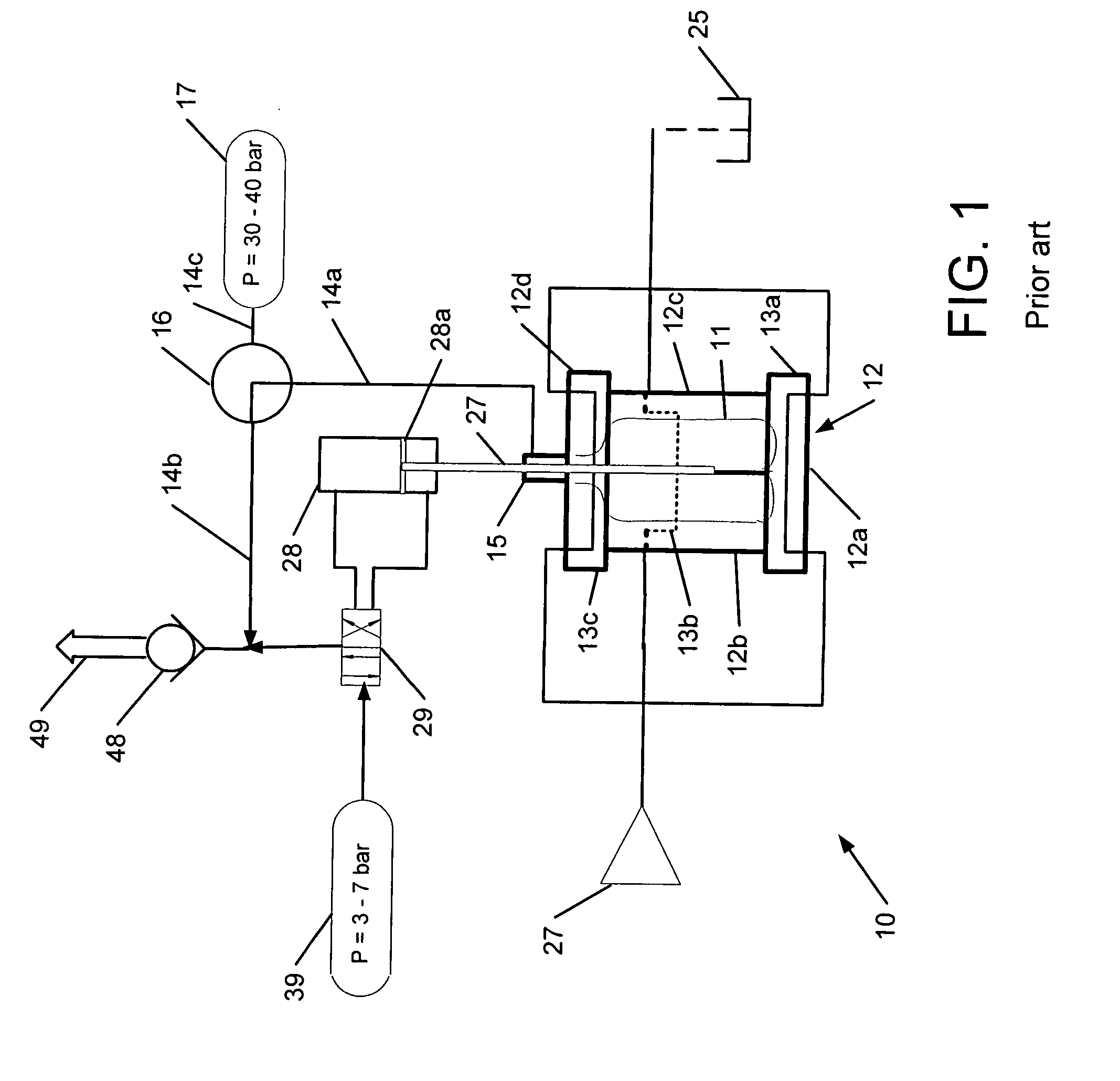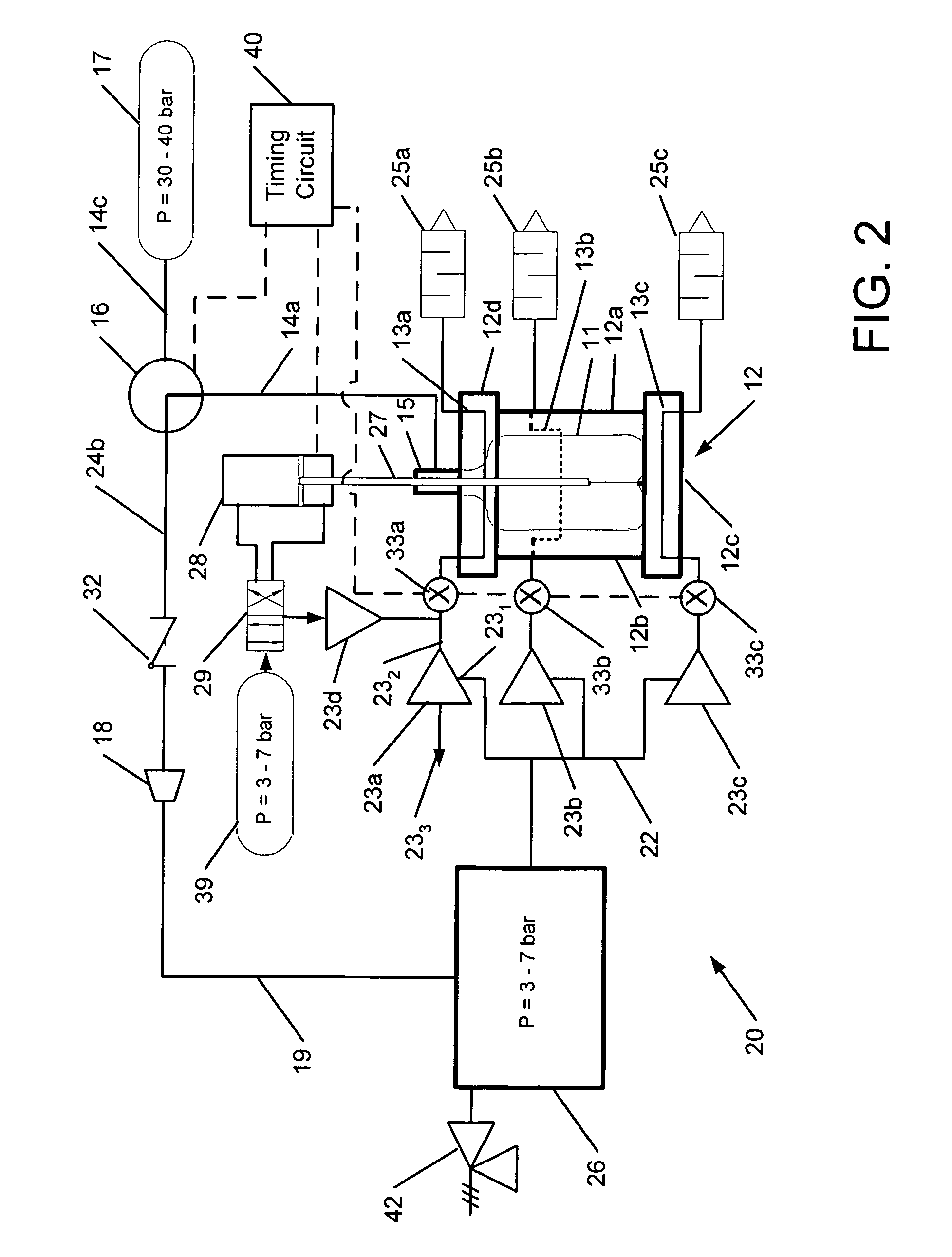Mold cooling by recovery of energy from spent compressed air in blow-molding process
a blow molding and compressed air technology, applied in other chemical processes, refrigeration machines, lighting and heating apparatus, etc., can solve the problems of waste of compressed gas used in blow molding process, scale buildup and corrosion of water-cooled systems, and high maintenance costs, and achieve the effect of less energy
- Summary
- Abstract
- Description
- Claims
- Application Information
AI Technical Summary
Benefits of technology
Problems solved by technology
Method used
Image
Examples
Embodiment Construction
[0019]The invention is directed to systems and methods that efficiently cool a mold at the conclusion of the molding process to facilitate removal of a dimensionally stable container from the mold. In particular, the systems and methods described herein can recover energy from the compressed gas employed in the blow-molding process. The recovered energy is used for cooling the mold, thereby saving energy compared to conventional cooling methods that employ recirculating chilled water cooling.
[0020]FIG. 1 shows schematically a conventional blow molding system 10, which includes a mold 12 with a mold bottom 12a, side sections 12b, 12c, and a mold neck 12d. The mold bottom 12a, side sections 12b, 12c, and mold neck 12d may be separable to facilitate un-molding a finished container 11. Although the mold 12 is shown as having two side sections 12a, 12b, it will be understood that the mold 12 may have only one side section or more than two side sections. Cooling channels 13a, 13b, 13c for...
PUM
| Property | Measurement | Unit |
|---|---|---|
| glass transition temperature | aaaaa | aaaaa |
| glass transition temperature | aaaaa | aaaaa |
| temperature | aaaaa | aaaaa |
Abstract
Description
Claims
Application Information
 Login to View More
Login to View More - R&D
- Intellectual Property
- Life Sciences
- Materials
- Tech Scout
- Unparalleled Data Quality
- Higher Quality Content
- 60% Fewer Hallucinations
Browse by: Latest US Patents, China's latest patents, Technical Efficacy Thesaurus, Application Domain, Technology Topic, Popular Technical Reports.
© 2025 PatSnap. All rights reserved.Legal|Privacy policy|Modern Slavery Act Transparency Statement|Sitemap|About US| Contact US: help@patsnap.com



